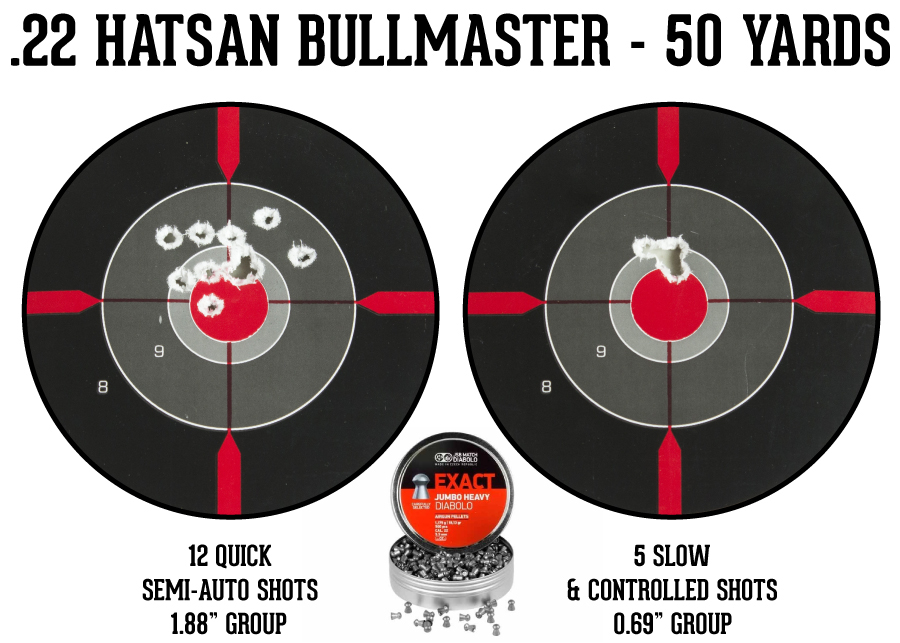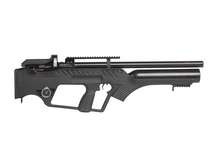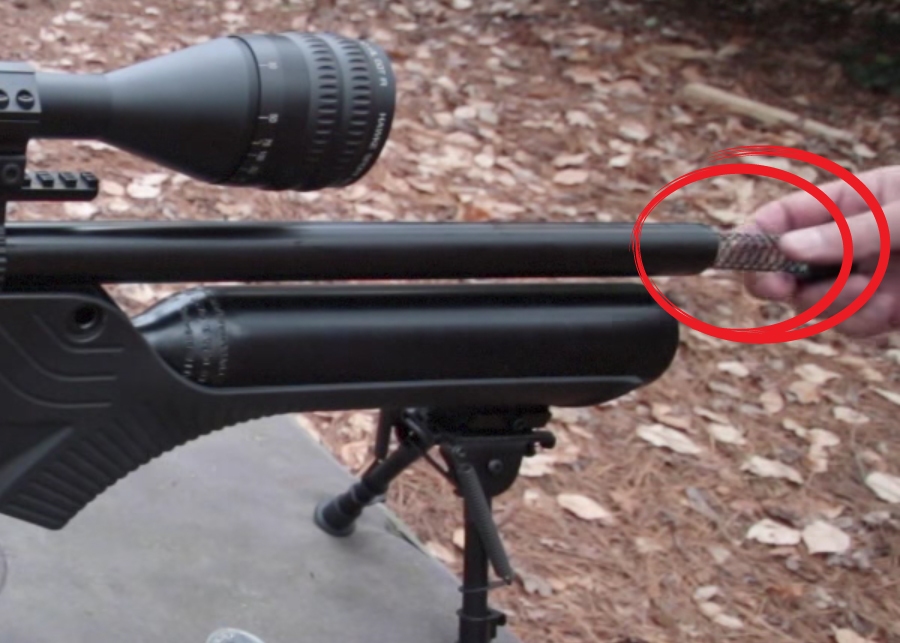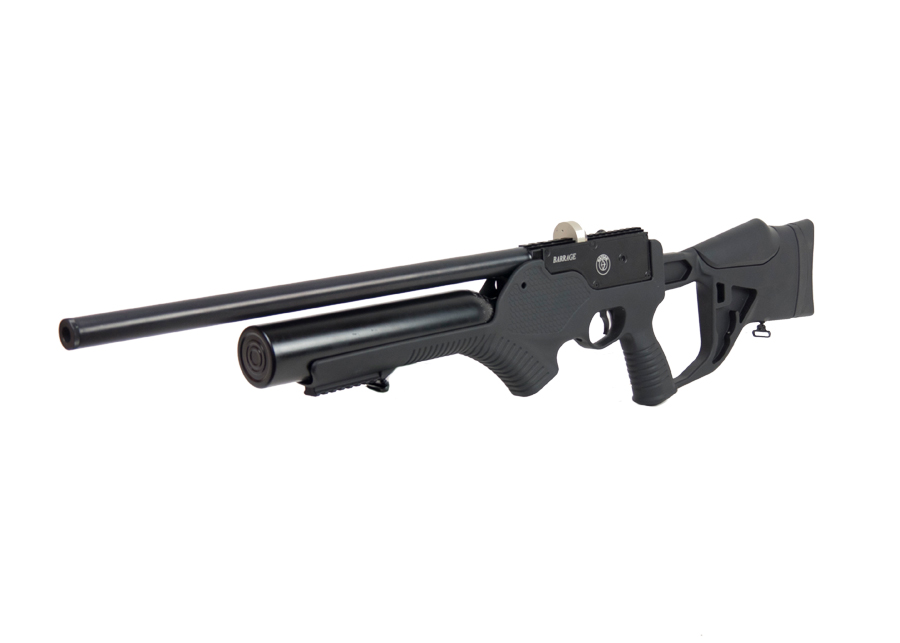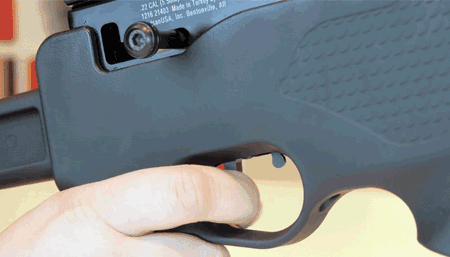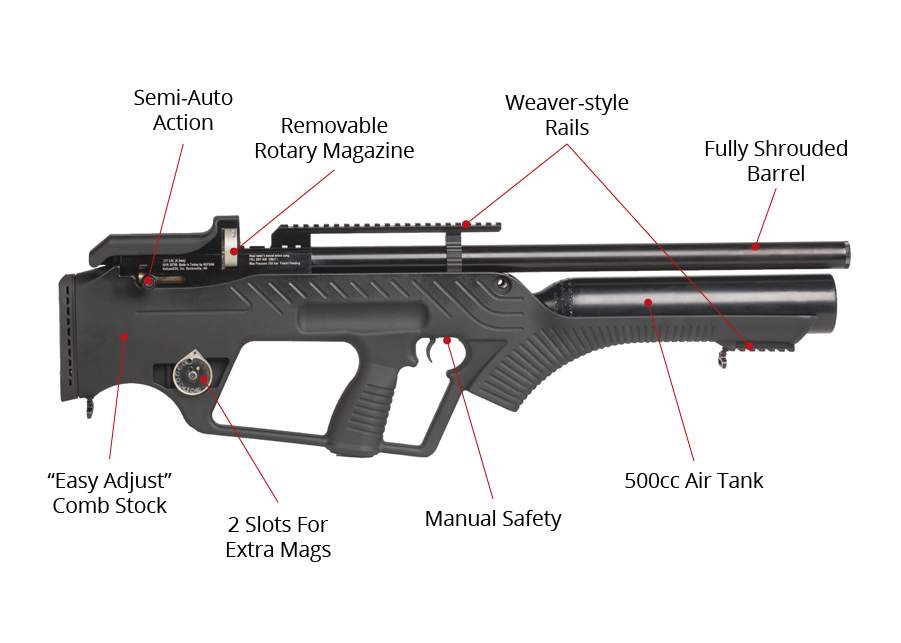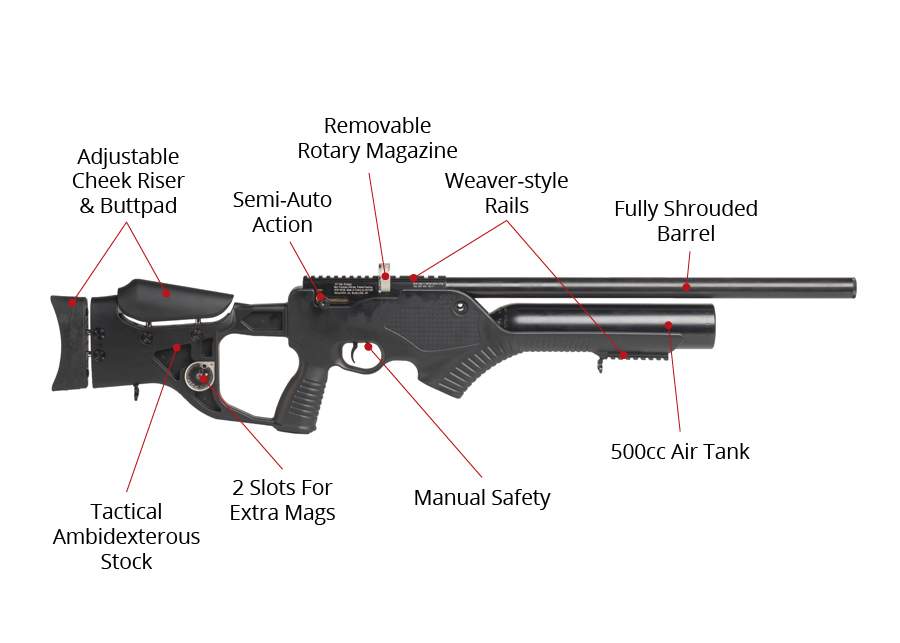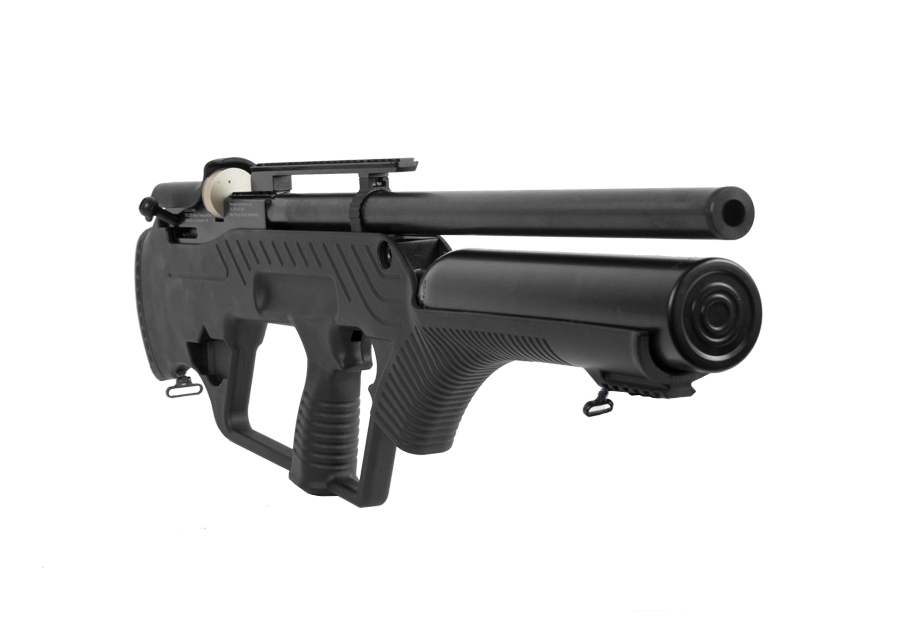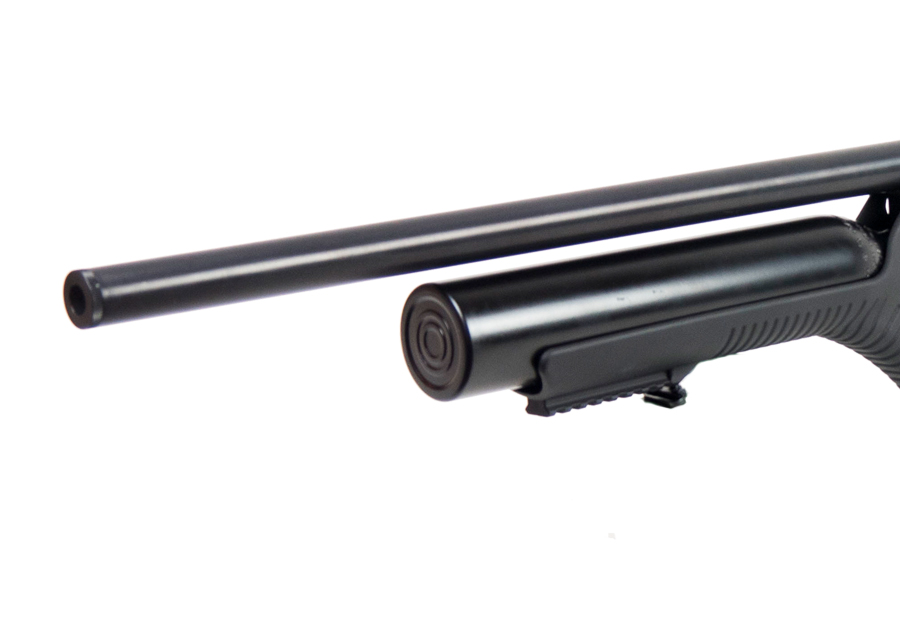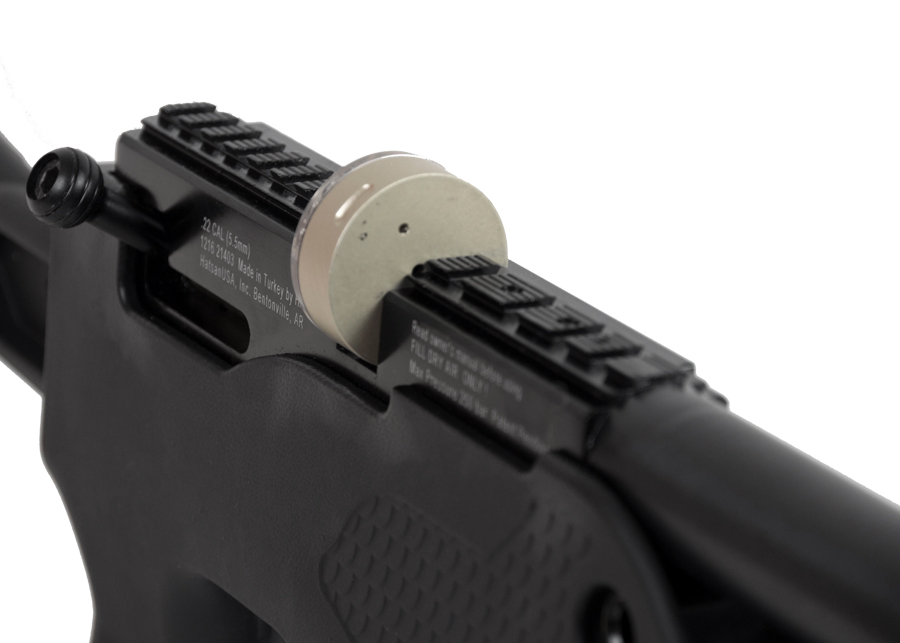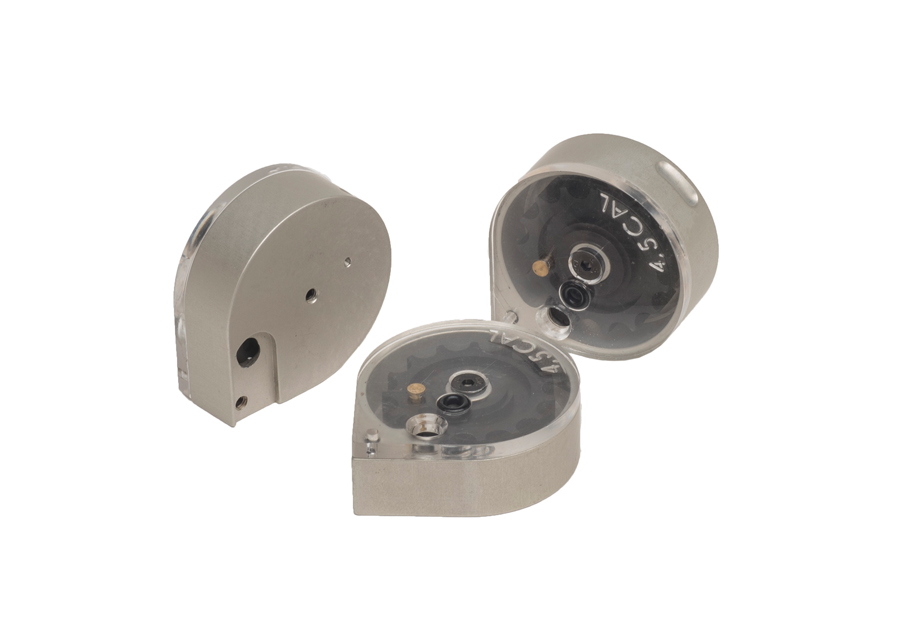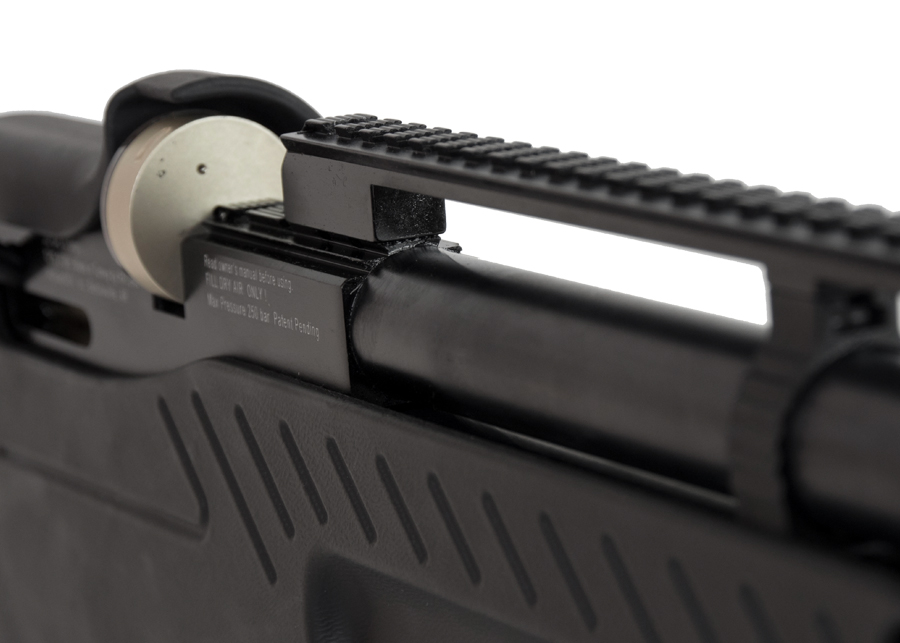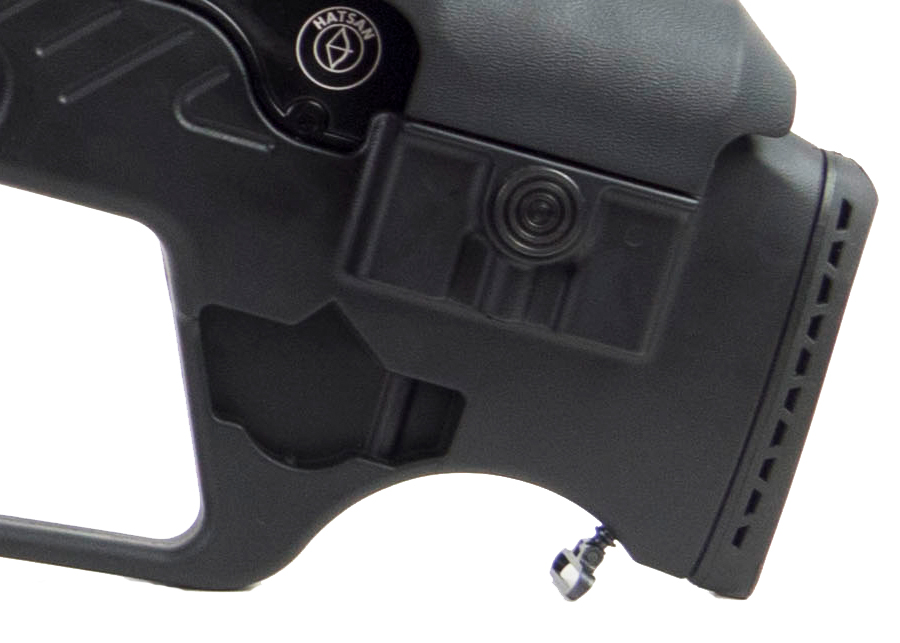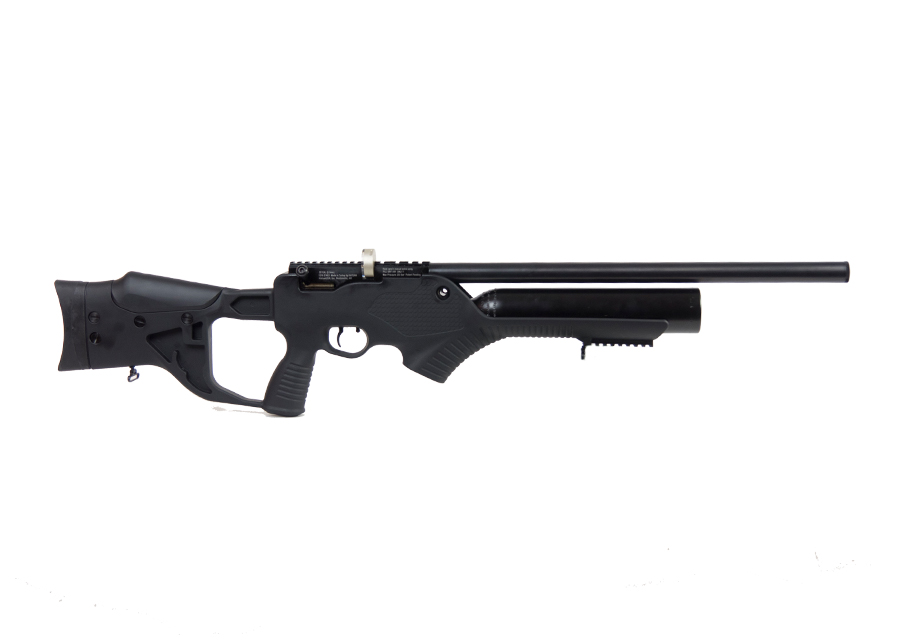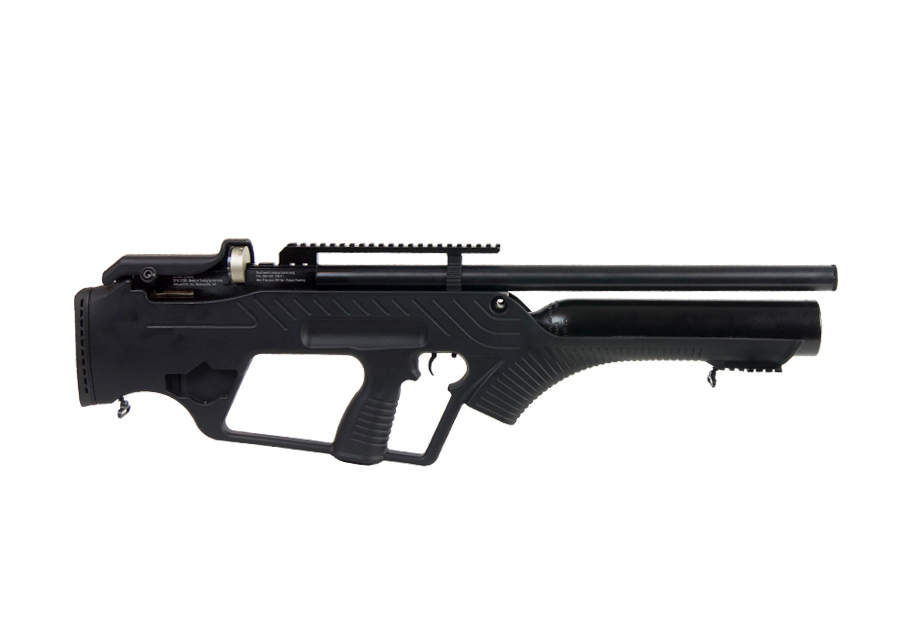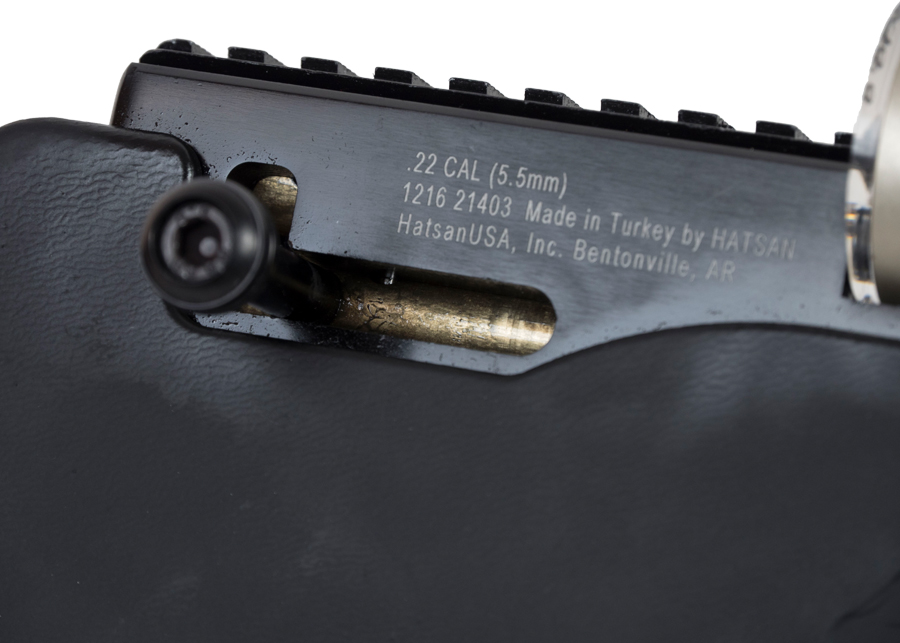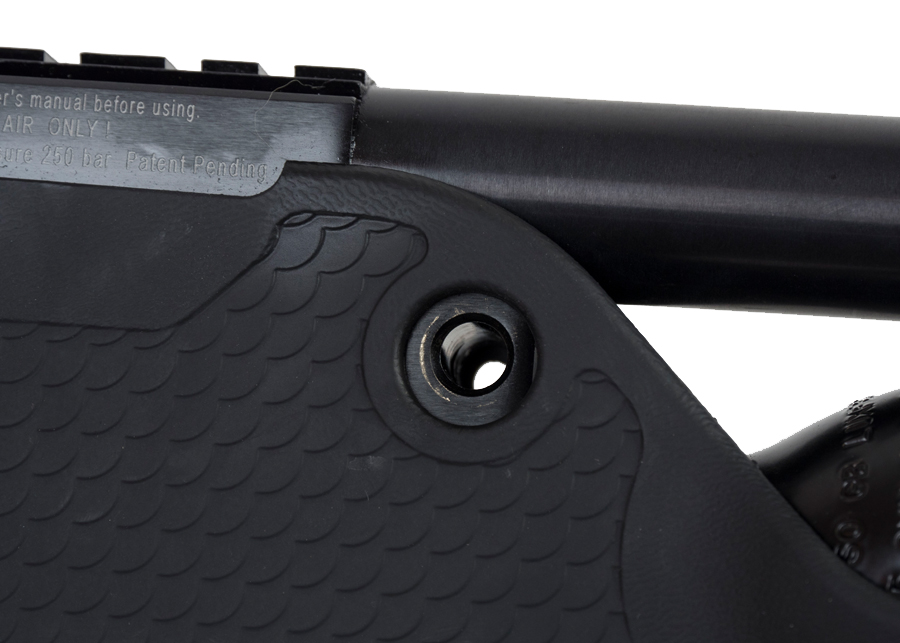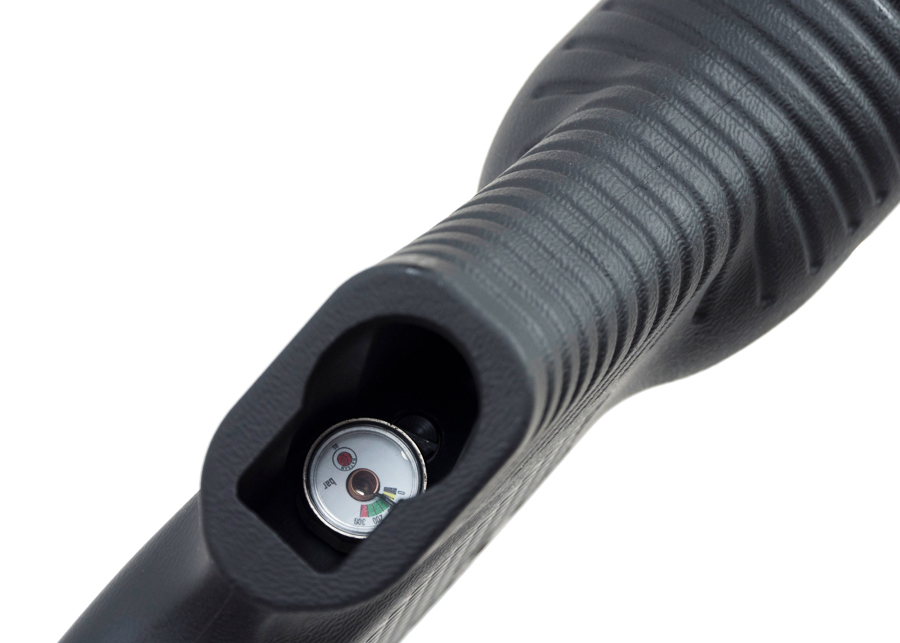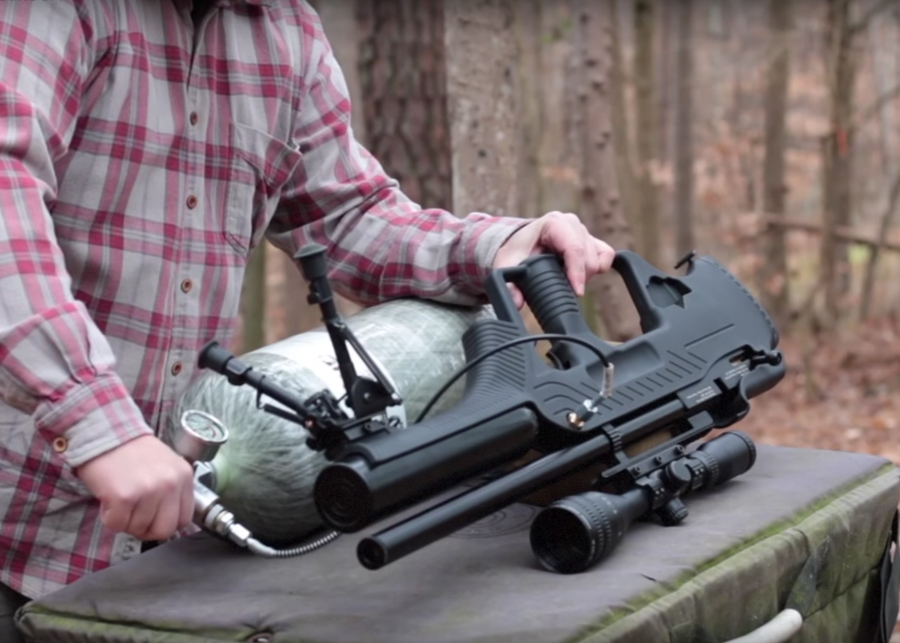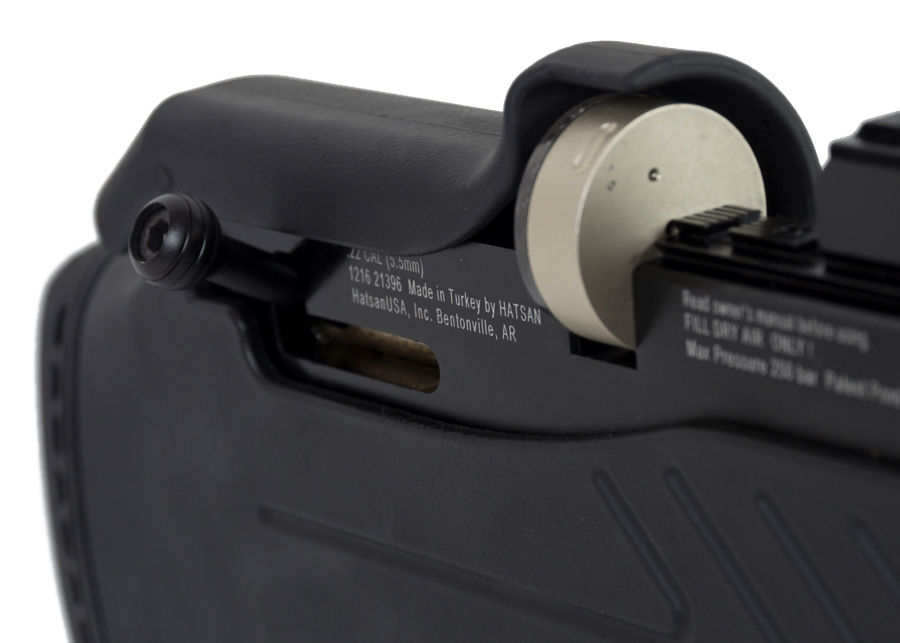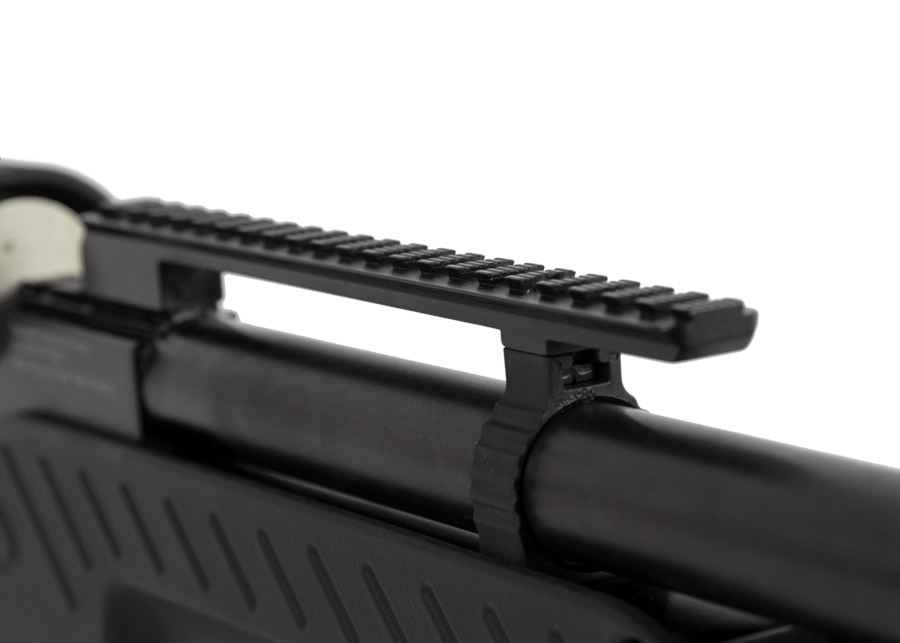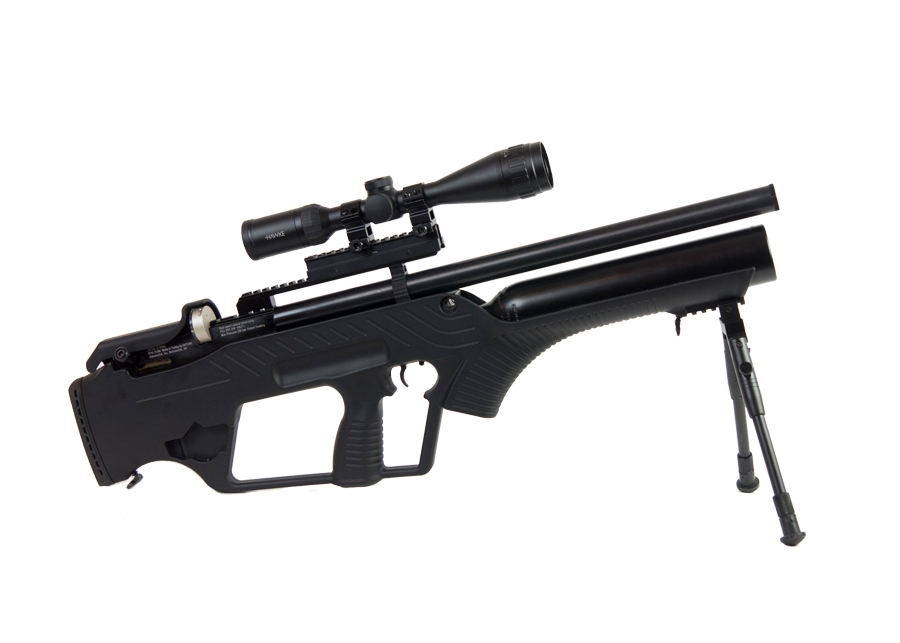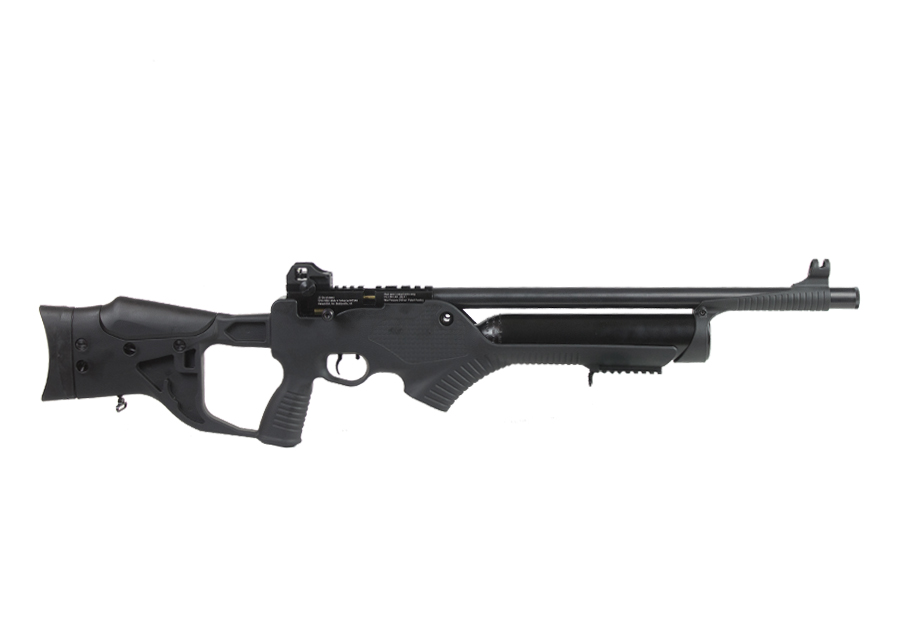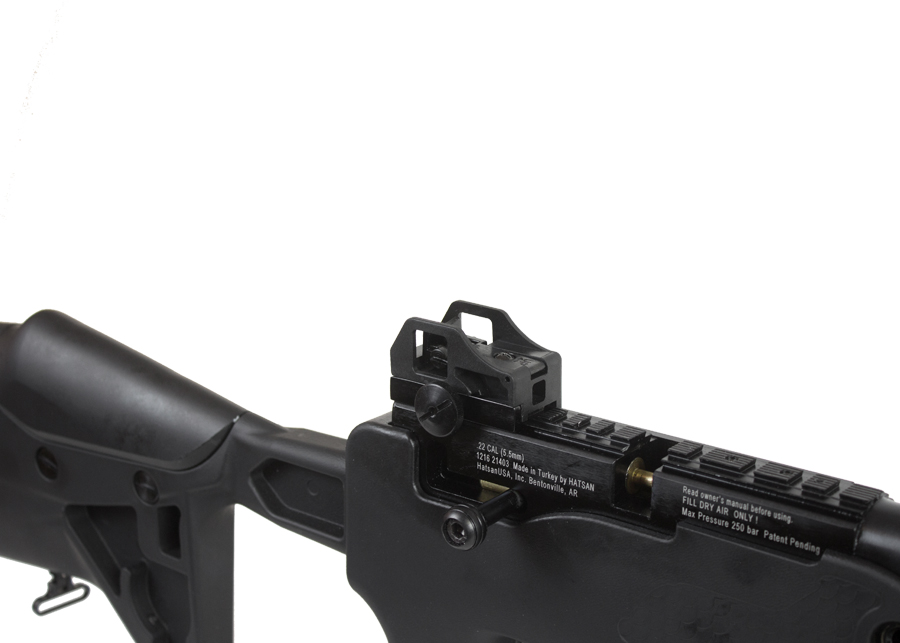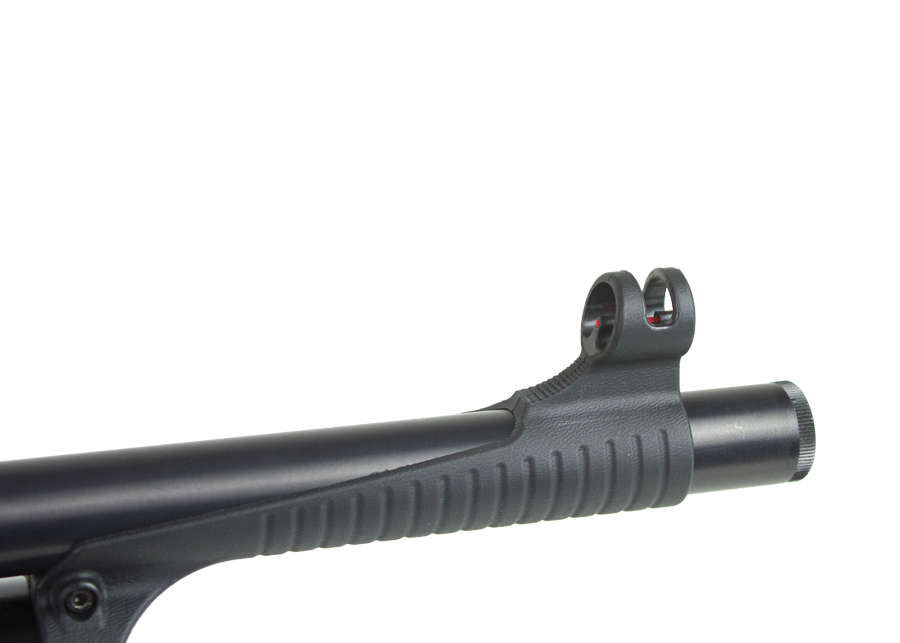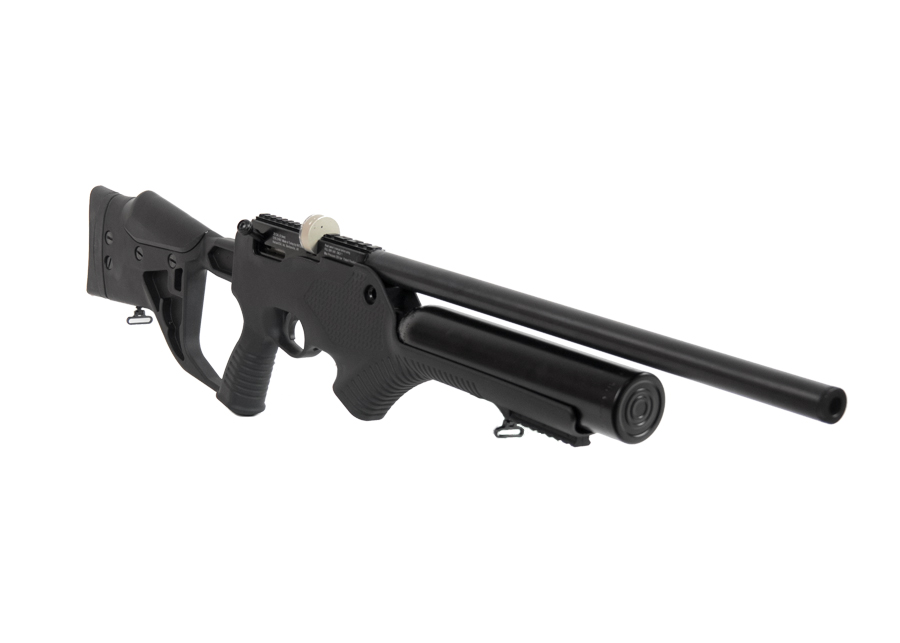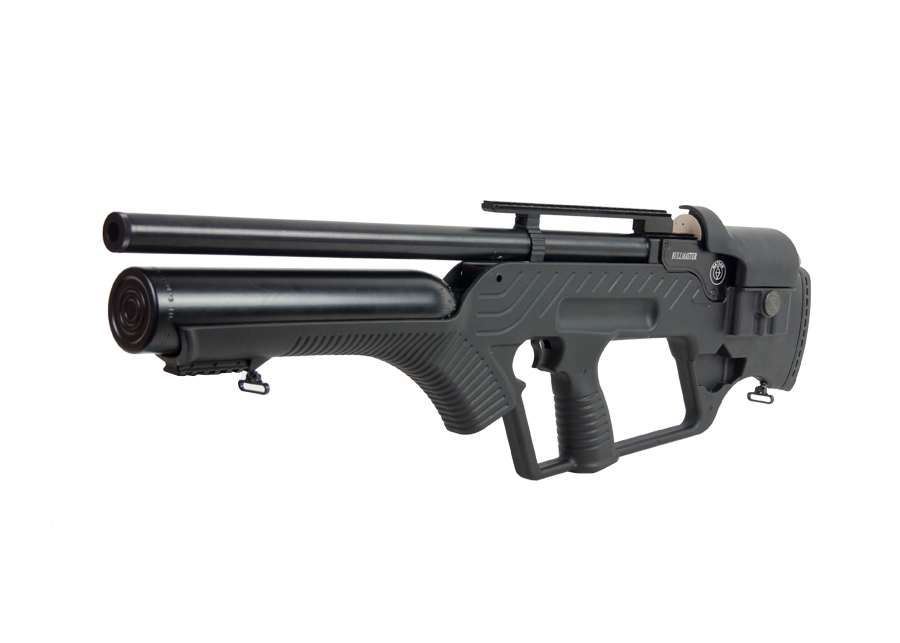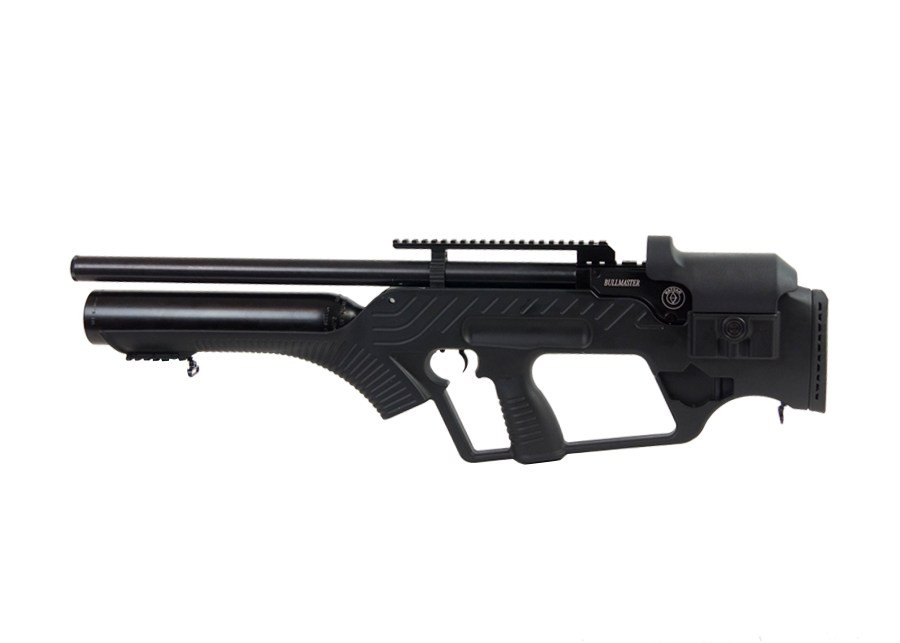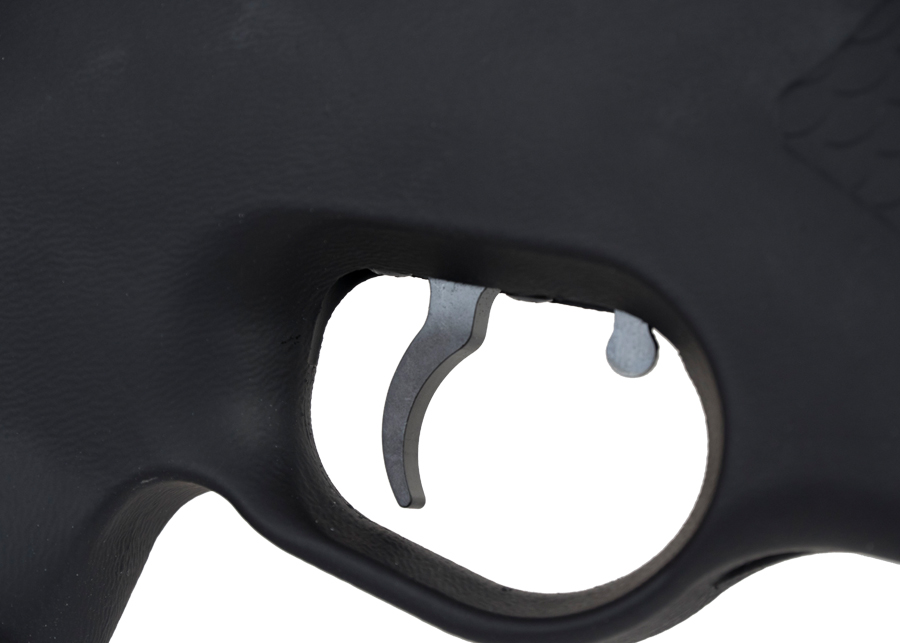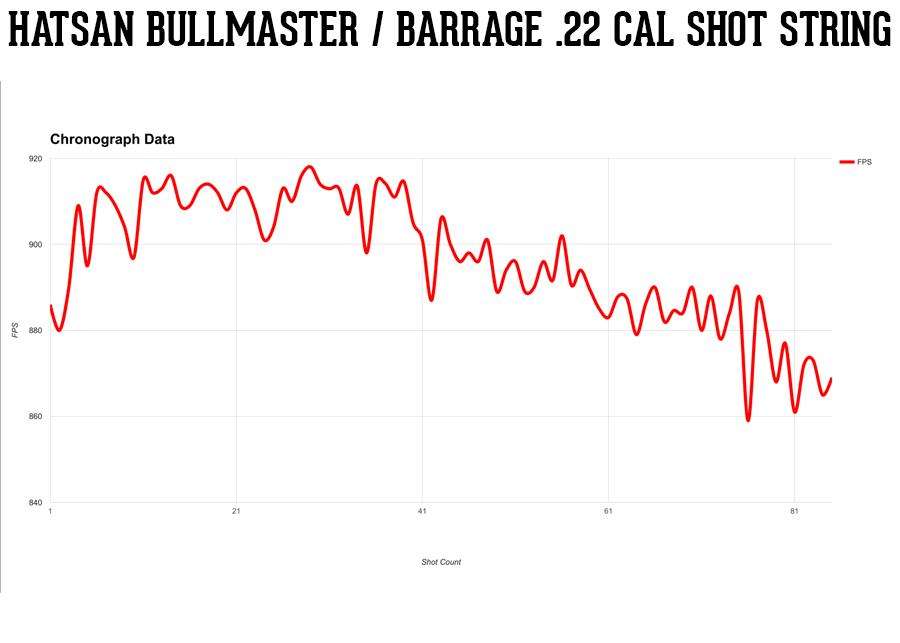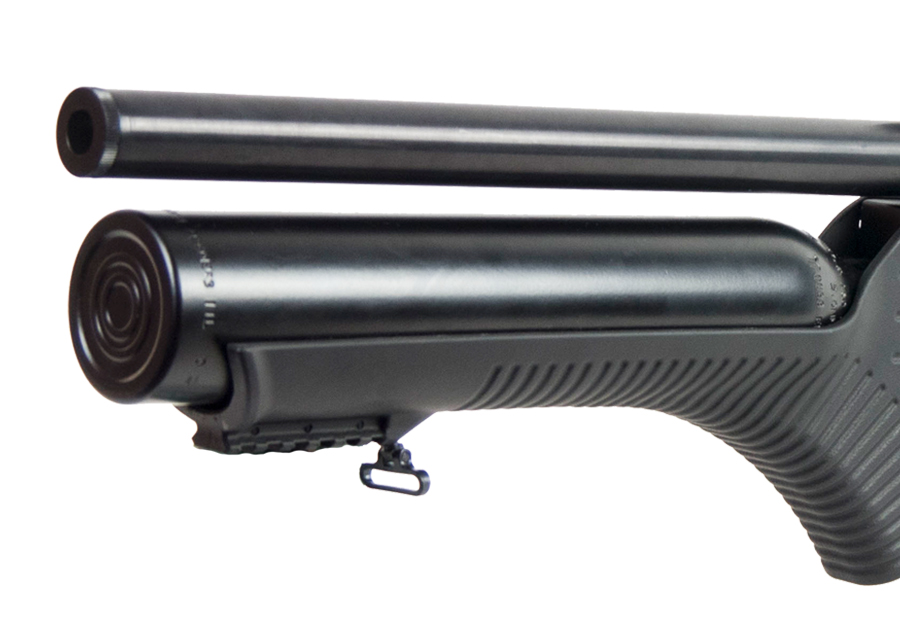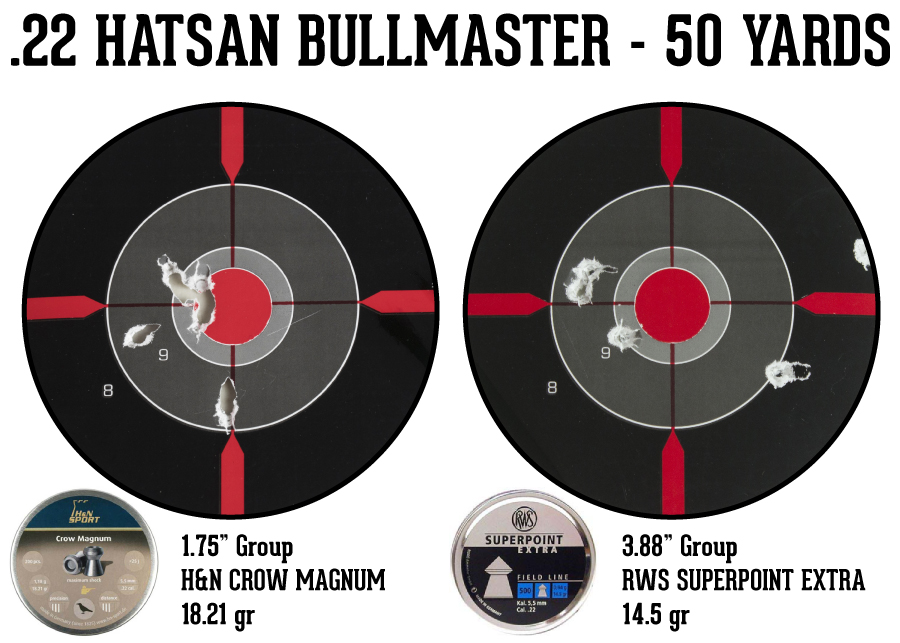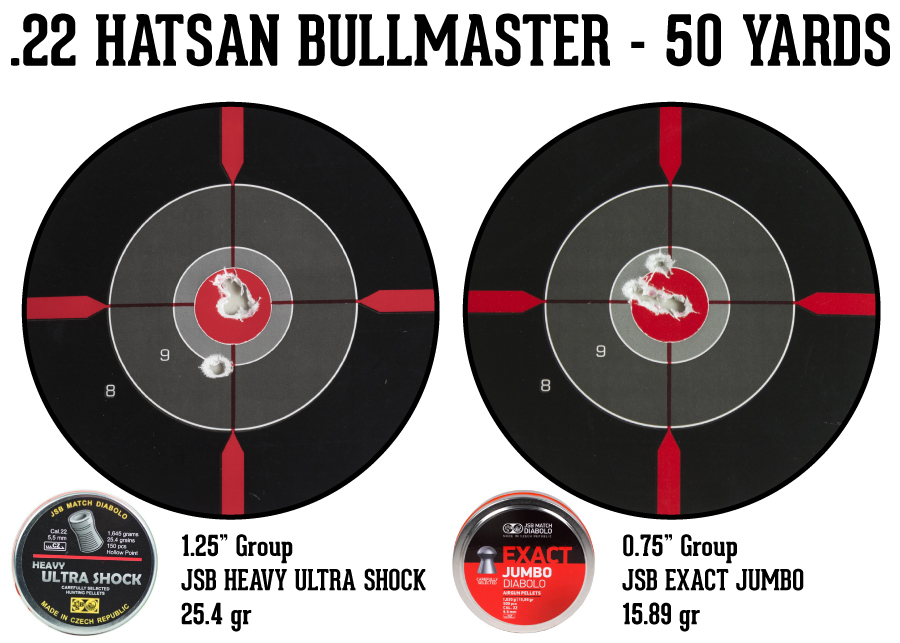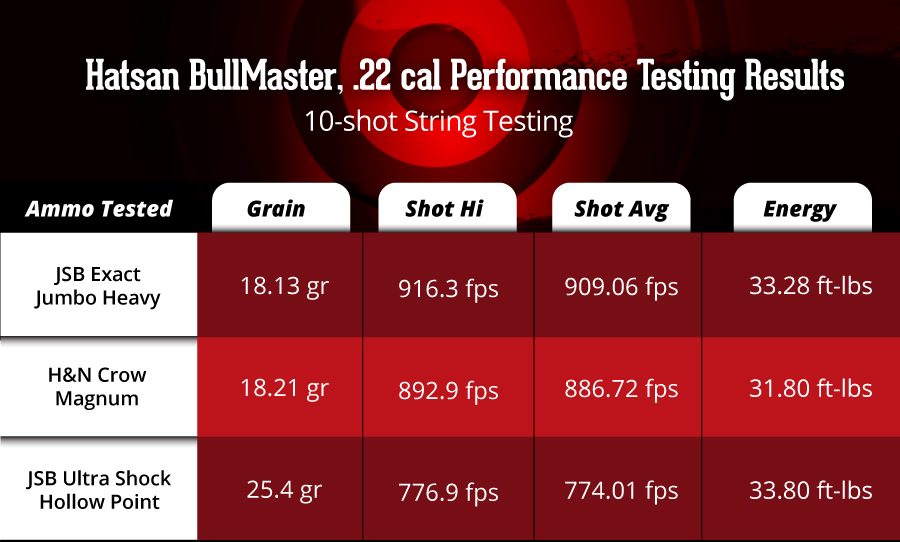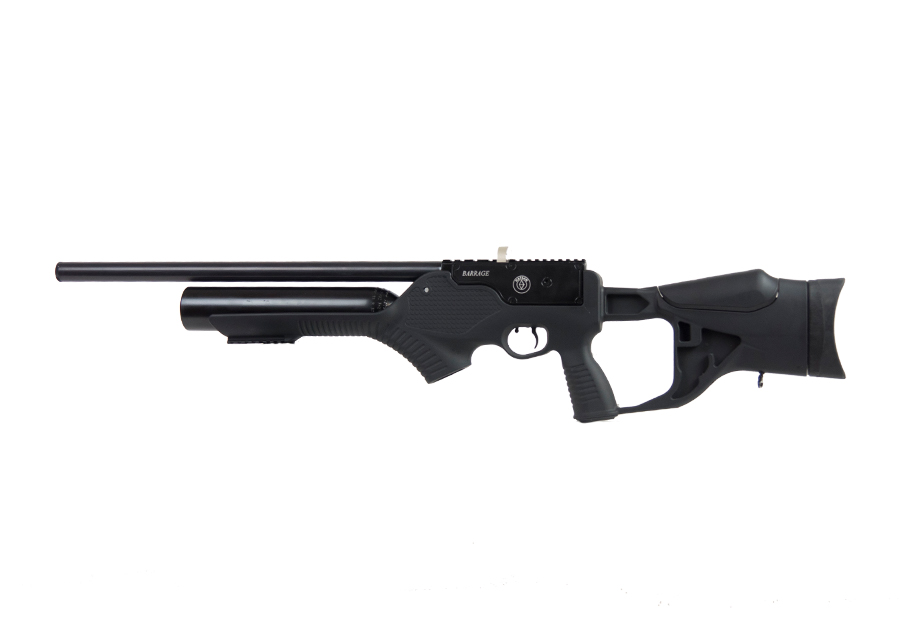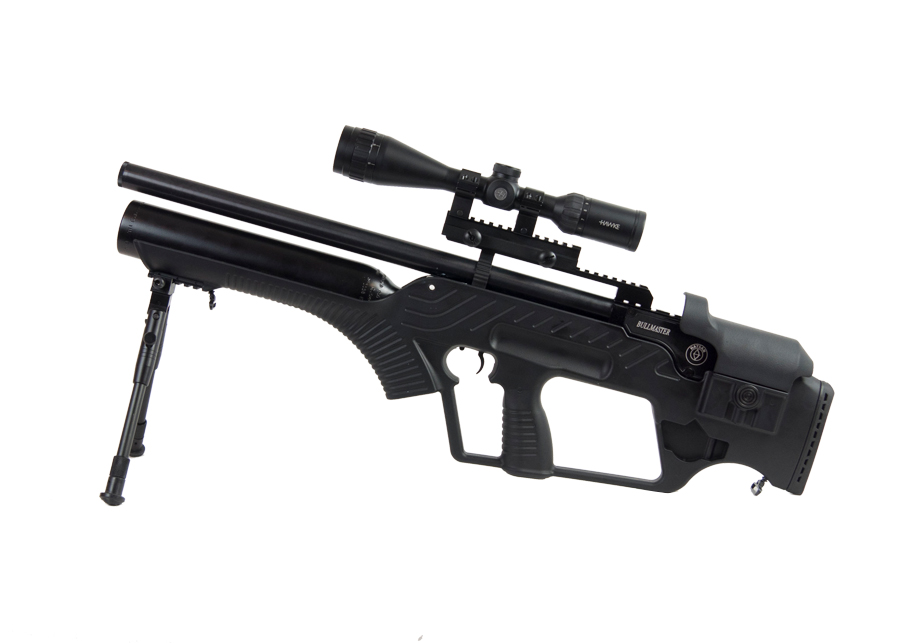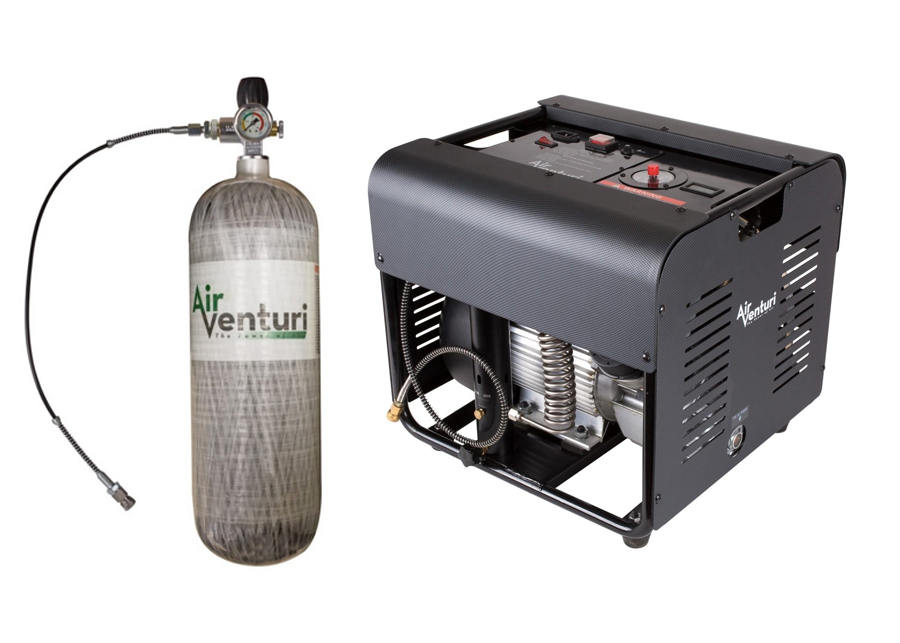Free Shipping on orders over $150
Talk to an Airgun Specialist 1-866-477-4867
Definitive Guide to Hatsan Bullmaster & Barrage
A semi-auto airgun isn?t a new thing, but it?s something that either hasn?t been executed well or was so terribly expensive that most of us wouldn?t consider it. That has now changed with the arrival of the Hatsan BullMaster and the Hatsan Barrage. Semi-auto airguns that work and work well, at a price point many are surprised and delighted with. The Barrage and BullMaster will bring a grin to your face as you fire them, quickly replaced by a lasting smile as you find them still practical and useful rather than just something fun. Discover why you should consider a Hatsan semi-auto PCP rifle.
Order a Hatsan Bullmaster & Barrage
Detailed Review
Semi-Auto Mechanics
For over 10 years now, you could pick up a semi-auto air rifle if you?d like. But many of those were often problematic/clunky cycling systems involving batteries, or simply hard to find imports with a hefty price tag. With the introduction of the Hatsan BullMaster and the Hatsan Barrage this has changed, as for the first time there is a viable semi-auto option that is reasonably priced, available, and also retains the practical power and accuracy that Hatsan has become known for. These air rifles cycle using expanding air from the firing cycle to mechanically cycle the bolt & firing pin. There is a gas port in the barrel that allows air to compress a piston at the top of the barrel, which then expands back due to a spring behind it. The piston is connected to the action via a linkage that cycles the action. This is a far superior semi-auto system the those that use electric motors(much like those found on airsoft guns) and is more akin to firearms where the force of expelled gas is used to drive the bolt. Just like a semi-auto firearm, expanding gasses do the work of cycling the bolt. Basic Anatomy of the BullMaster & Barrage
This guide covers both the Hatsan Barrage and the Hatsan BullMaster Semi-auto air rifles. These rifles essentially share the same internals with only subtle differences, allowing both a bullpup configuration and a full length rifle version. Both rifles feature stocks that are synthetic with a soft touch rubberized texture to improve the grip and feel of the gun. Hatsan has included a forend secondary grip which comes in nicely as these are not lightweight guns. Both rifles come in weighing right around 10 lbs unscoped. So there is no weight saved by choosing the BullMaster over the Barrage, though the bullpup design shifts the weight towards the back of the rifle making the rifle feel more balanced. Both rifles include a choked 21 inch rifled barrel in a full shroud. All Hatsan rifles are built using high grade German steel that has consistently provided excellent accuracy and quality. Both the Barrage and BullMaster are offered initially in .177 & .22 caliber. There will eventually be a .25 caliber option offered, but Hatsan is working to perfect that caliber at the moment. As far as mounting optics, Hatsan uses a combination Weaver/Dovetail rail that lets you mount just about anything that you have. This is a great feature considering many airgunners already have a preferred scope and ring set up. Note that these aren?t standard weaver rails, but we have had no problem mounting on them. Both the Barrage and BullMaster are also equipped with a lower accessory rail for mounting bipods or anything else that you would like. The Barrage and BullMaster have a completely different magazine design than the standard Hatsan Magazines used by a majority of their other PCPs. The semi-auto design required a spring loaded magazine to quickly cycle the next pellet into place without further hindering the expelled air needed to cycle the bolt. Many will note that this new magazine is essentially a copy of the magazines used on FX air rifles. While they look identical and the FX magazine will even fit in the Hatsan, there is just enough difference that the FX magazine doesn?t cycle properly in the Hatsan (and the Hatsan magazine seems to be just a hair wider than the FX magazine, enough so that it doesn?t fit in the FX breech properly). They are similar enough though that if you own both rifles, you may want to mark them to help differentiate. Note that some of the magazines we received were a little tight, but using an allen wrench we loosened the center bolt up and they seemed to work much better. A very nice touch is that the rifle ships with three magazines. And both the Barrage and the BullMaster have spare magazine holders molded into the base of the stock below the cheek comb area. There is a spot on either side so you can store both extra magazines. Upon extensive testing of both the Hatsan Barrage and BullMaster, we found that at times the magazine would not cycle after a shot. When this happens simply manually pull back the bolt to cycle the gun and then it is ready to fire. Not a huge problem but worth noting. Due to the semi-auto nature of the guns, the rifles have a manual safety. So be sure to set the safety to the ?SAFE" position after firing. Also be extremely careful if you remove a magazine that is not completely empty. The auto cycling of the bolt after firing means that another pellet is already chambered and ready to fire. Removing the magazine will not remove the chambered pellet. So be sure to completely empty a magazine before removing the magazine, and as always treat any rifle as if it loaded and ready to fire. The fill port is located in front of the air cylinder which is a different location for those familiar with other Hatsan air rifles. There is also an unusual air gauge placement located deep within the grip of the gun. This makes it a little trickier to fill as really the only way to fill the gun and keep an eye on its manometer is to place the rifles upside down. Differences Between the BullMaster & Barrage
There is a key difference between the BullMaster and the Barrage. Since the BullMaster is in a bullpup format, the bolt cycles at the back of the gun to the right side of the cheek piece. Not a big deal if you should be right handed, but if you?re a lefty, you won?t be able to fire the BullMaster. We also noticed on the BullMaster that the scope rail is set rather low. We would suggest using only high rings, and even then you might consider a rail mount riser. It is very unlikely you will use the comb adjustment on the BullMaster do to this. The Barrage on the other hand was easier to acquire a nice sight picture with just high rings. The Barrage will give you a little bit more adjustability than the BullMaster as you can adjust the cheek piece as well as the butt pad. The BullMaster has a push button cheek riser whereas the Hatsan Barrage must be turned with a flathead screwdriver. The irony being as mentioned above, the BullMaster cheek riser will almost certainly not be raised. Another nice feature only included with the Barrage is a set of fixed sights. The front sight is added with a sleeve that wraps around the air cylinder and slides over the barrel. The back sight attached to the rail and is two way adjustable. It?s a nice feature to be able to shoot at short range open sights, making the Barrage a great pest control option. Trigger & Loudness
The loudest part of shooting the Barrage or BullMaster is the cycling bolt. The barrels on both rifles are shrouded, but not baffled. Still the downrange noise is quite low. We?d still call this backyard friendly? but depending on the size of your backyard. The thump of the cycling bolt might concern neighbors if you have some within close proximity, especially if you are firing the rifle rather quickly. Our decibel readings placed these rifles at 67-68 dB range. That?s a little bit louder than a Marauder or other Hatsan QE models like the AT44 or BullBoss. But considered it is only shrouded and doesn?t have the QE baffles (that space is taken up by the mechanisms needed to make it semi-auto), it is still surprisingly noise friendly. When you fire the rifle you?ll think it?s much louder though due to the cycling bolt right next to your ear. The trigger itself is one of the weaker parts of the gun for us. These semi-auto guns are not equipped with Hatsans awesome Quattro Trigger system, as such the trigger is very heavy and non-adjustable. It pulls right around 6.7 lbs and can best be described as a long and very mechanical feeling. We did find that we were still able to fire off some fairly fast strings of fire despite the longer and heavier pull. Shots per Fill, Power & Accuracy
Manufacturer specs from Hatsan lists shots per fill for the .177 at 60, and 50 shots per fill in .22 caliber. In our tests we were able to achieve significantly more shots without significant drop-off (approaching around 80 shots). Rather it was a gradual drop off after around shot 60. Unless you?re hunting and need maximum power, We don?t see any problem running this down to 100 bar before refilling. Also note that the gun isn?t regulated (as is clearly shown by the graph). The shots per fill is mainly attributed to the large 500cc aluminum air cylinder that can be filled to 250 bar. Hopefully future versions of the gun can incorporate a carbon fiber bottle that could possibly drop the weight of the gun by over a pound versus the heft of the aluminum bottle. Several pellets were used in our .22 caliber test rifle. Note that longer pellets like Predator Polymag, JSB Jumbo Beast & Jumbo Monsters will not fit in the magazine so should be avoided. We also had poor accuracy with Skenco Newboy Juniors and RWS Superpoints. But got a decent group from the H&N Crow Magnums. Our best group came from the pellet we tried first, seemingly the golden standard lately for us, the 18.19 grain JSB Jumbo Heavy. We were able to obtain a " group at 50 yards using this pellet. That group was obtained using slow, deliberate shots. When we quickly fired taking advantage of the full semi-auto capabilities. That group opened up to 2" at 50 yards. Probably a combination of a heavy trigger pull and the movement of the gun from cycling the bolt. Other pellets that worked very well were the JSB 15.89gr Exact Jumbos as well as the JSB Heavy Ultra Shocks. Both groups had a flier but produced excellent results. The JSB Heavy Ultra Shocks produced the best power numbers in .22 caliber reaching on average just under 34 ft/lbs. Most other pellets were in a similar range which puts the power of the .22 cal Barrage & BullMaster just a hair under other standard Hatsan rifles like their AT44 & BullBoss. Accessories
Both the BullMaster and Barrage include 3 magazines meaning you might not initially need to pick up extra magazines like you would with other rifles. Both rifles have magazine holders on either side of the stock which is a nice touch. If you would like to mount a bipod to either rifle, we would suggest a lower profile bipod with shorter legs like the UTG Bipod Heavy Duty Recon or UTG Tactical BiPod where the legs are under 8 inches. This is just personal preference especially when we were shooting if off a bag to have the rifle closer to the surface. As you can see in the picture below, larger bipods really raise the forend. Like all Hatsan guns, the fill probe provided with the gun is threaded so you will want to pick up a male quick-disconnect foster adapter to make it easy to connect to your hand pump, carbon fiber tank, or air compressor. And speaking of sources of air, we would highly discourage someone from picking up a hand-pump to fill either the BullMaster or Barrage. Due to the semi-auto nature of the gun, you will be firing more pellets down range and thus run through air much quicker. Stick with either a large carbon fiber tank, or invest in an Air Venturi air compressor combined with a smaller carbon fiber buddy bottle to take with you to refill in the field. Sure the sticker shock will be a bit tough to swallow, but you?ll thank yourself long term as the savings of trips to the local scuba shop turn into a thing of the past! First Accessible Semi-Auto PCP There have been other semi-auto PCP?s. And we thank them for paving the way for others to follow their lead. But until now many of those semi-autos haven?t been very accessible. Accessible meaning 1- that you can easily find one to purchase 2- It actually works so you?re not going to end up with something gimmicky that will fail on you. And 3- It?s priced such that you can actually consider investing in one. The last point is subjective of course, meaning the price of the gun is no problem for some, while would never be considered for others. But the exciting thing for all airgun fans is that the cost of manufacturing and the spread of popularity of airguns sees both rapid innovation and dropping of prices to make the sport more obtainable for all of us. The Barrage and BullMaster is just another indication that it?s a great time to love airguns!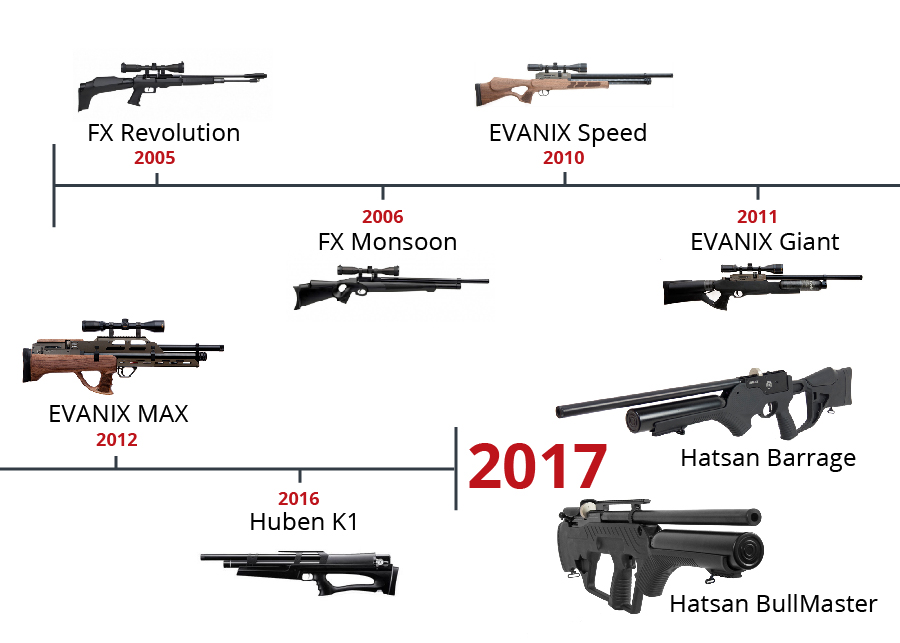

BullMaster vs Barrage The Bullmaster and the Barrage are essentially the same gun just in different configurations; the BullMaster is a Bullpup with the action at the back of the gun while the Barrage is in a standard rifle layout. Both have the exact same barrel length, same power, action, and accuracy. And both stock designs incorporate a secondary foregrip that we quite liked as well as spare magazine holders. The main difference between the two rifles is that the BullMaster if a right hand only rifle. This is because the semi-auto nature of the gun automatically cycles the bolt that would be right by the face of a left handed shooter. There are no such concerns with the Barrage. Other subtle differences include more adjustability on the butt stock of the Barrage for length of pull. Though the trigger mechanism is different on the BullMaster due to it being further forward from the action, it feels essentially the same as the Barrage.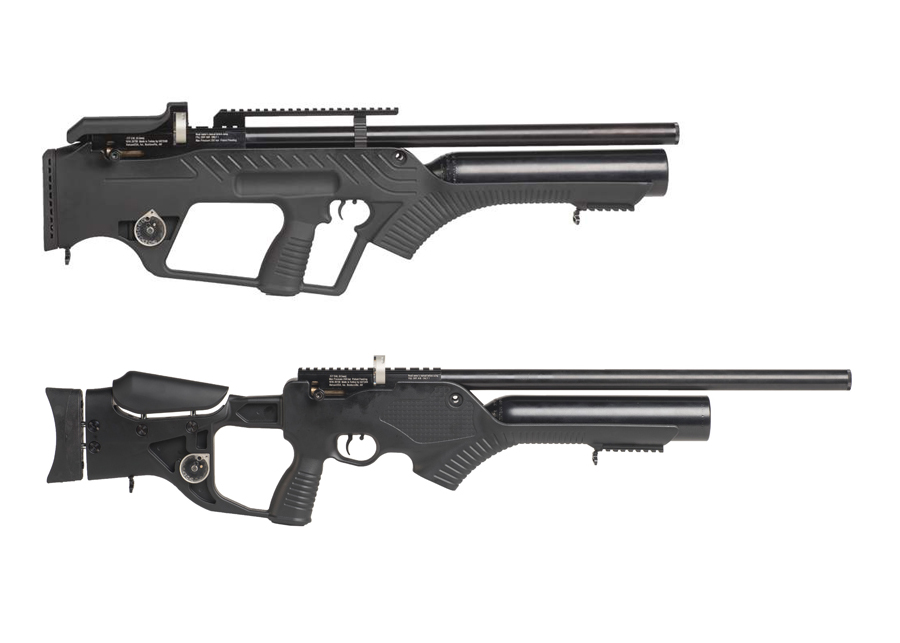

Accuracy at 50 yards Like all airguns, and especially pre-charged pneumatic air rifles, pellet selection is key to getting the highest level of accuracy out of the Barrage & BullMaster. We spent an afternoon testing upwards of 15 different pellets in .22 caliber and were able to obtain a 3/4? group at 50 yards with JSB Jumbo Heavy 18.19 gr pellets. Keep in mind those were slow controlled shots. When we shot the same pellet quickly utilizing the semi-auto aspects of the gun, that group opened up to 2?.